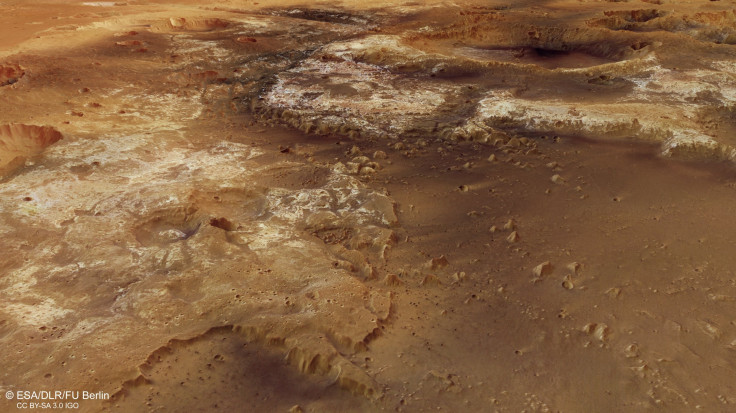ExoMars 2020 Update: ESA Chooses Second Landing Site Candidate For Mars Rover Mission

When the ExoMars rover lands on the surface of the red planet in 2021, it will do so in either Oxia Planum or Mawrth Vallis. The European Space Agency (ESA) announced Tuesday that it had whittled down the list of possible landing sites for the mission to the two locations that previous observations suggest contained water in the planet’s early history.
Oxia Planum — a plain in Mars’ northern hemisphere that contains layers of clay-rich minerals believed to have formed as a result of prolonged interaction with water about 3.9 billion years ago — had been already selected as a candidate back in 2015.
Read: Asteroid Impacts May Have Triggered Tsunamis On Ancient Mars
“After a two-day meeting with experts from the Mars science community, industry, and ExoMars project, during which the scientific merits of the three sites were presented alongside the preliminary compliance status with the engineering constraints, it was concluded that Mawrth Vallis will be the second site to be evaluated in more detail,” the ESA said in a statement. “Around a year before launch, the final decision will be taken on which site will become the ExoMars 2020 landing target.”
Mawrth Vallis is a large outflow channel located a few hundred miles away from Oxia Planum, most likely formed due to ancient floods. The region is also rich in sedimentary deposits, and contains several minerals that suggest a sustained presence of water over a period of several hundred million years.

Neither of these sites has previously been explored (by humans, at least).
“Both candidate sites would explore a period of ancient martian history that hasn’t been studied by previous missions,” Jorge Vago, ESA’s ExoMars rover project scientist, said in the statement.
The Europe-Russia ExoMars mission, which aims to put a robotic rover on the surface of Mars in 2021, has already been delayed and is facing significant cost overruns. As part of the first phase of the endeavor, completed last year, the ESA and Roscosmos put an orbiter around the red planet, but failed to successfully land a technology demonstration landing module.
The ambitious mission will consist of a rover and a surface platform, in addition to the Trace Gas Orbiter (TGO) — which is already locked in orbit around the red planet and would serve as a relay module for the 2020 mission. While the solar-powered rover will perambulate the rocky terrain of Mars, drill through the surface to collect samples, and look for signs of organic material and the possibility of life — extant or extinct — the surface platform will, over the course of one Earth year, investigate the environment at the landing site.
© Copyright IBTimes 2024. All rights reserved.












